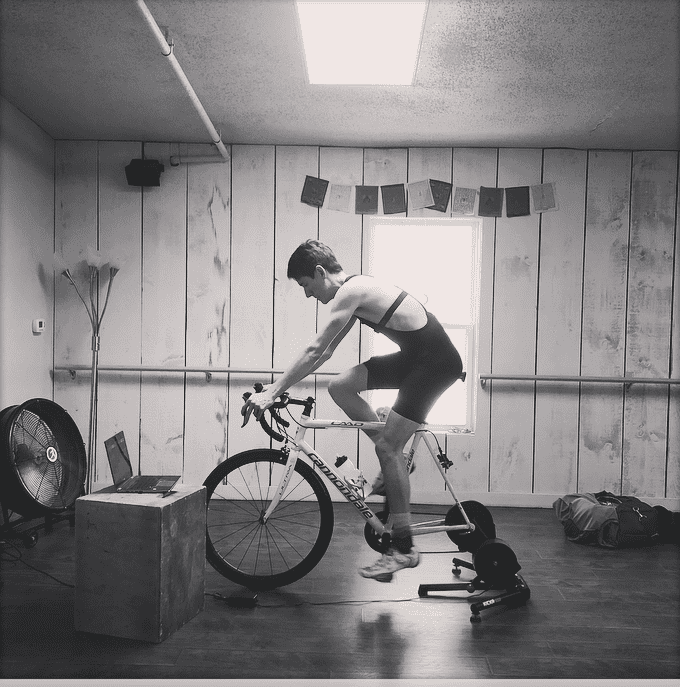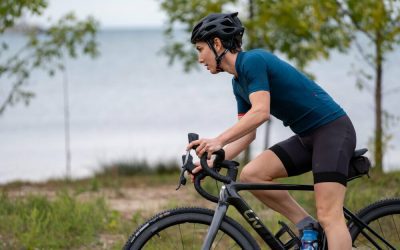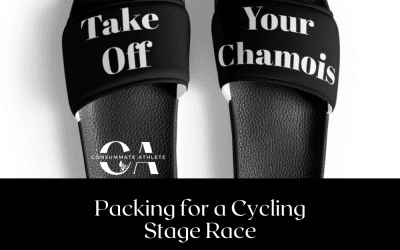“What Kind of Trainer Should I Get?” We recently got asked this question by a runner looking to do a bit more training indoors on her road bike over the winter. And as we were debating her best bet, we realized that this is a question that a lot more people might have right now. After all, with smart trainers as the current standard for riding inside, it would be easy to think the only way to train indoors would be a fully ‘smart’ trainer that hooks to your computer, tells you your wattage and syncs to online racing platforms like Zwift. Do you need to spend $1200 or more to maintain/build your fitness during inclement weather? No!
*Please note If you have a Smart Trainer then you are 100% awesome and ok! That is a great tool to have in your toolbox.
What’s In Your Training Tool-Box?
Thinking about your training gear like tools is a good analogy because each day, month, and year you are challenged to solve or ‘fix’ a training problem. You are at your Point A (current fitness, skills, results, etc.) and you want to get to Point B (the big race, watts, run time, etc). What your challenge will be is to apply the right load given the context you are in. The load might come from a hard run on a treadmill, and uphill or an easy spin on a bike. The context might involve winter and the inability to run outside for a period or to run outside with any speed or with an easy enough pace.
For a runner, a simple trainer or rollers might be a great break from the pounding of running and an efficient workout where they don’t need to get dressed up or risk falling on ice or trudging through deep snow. For any endurance athlete, the spend on a smart trainer should be weighed against what they could get for the same money to further build out their toolbox and augment their training resilience (e.g. consistency). Clothing, strength gear, massages, nutrition, coaching (ok we are biased), and travel to ideal camp locations are among ways that you might choose to build out your ‘toolbox’.
What do We Use?
We have used a variety of trainers in the past, but right now, we use a set of Cyclops Magnetic rollers that Peter has trained on for over 10 years including years over 1000 hours of training with no or limited ‘warm weather camps’! Molly is learning to embrace the benefits of rollers (e.g. balance/skill/attention/cadence) but loves the simplicity (and Netflix-ability) of a simple $130 Magnetic-trainer she can simply get on and pedal without any extra setup, internet issues, or monthly fees to online platforms.
But What Should You Get?
So, let’s break down the three main types of trainers/indoor riding options and the pros and cons of each. We’re keeping this super simple because if you’re wondering what trainer to get, you probably don’t need to get hit with a billion different options.
Smart Trainer with Direct Drive (rear wheel off)
Best for: Someone serious about training on the bike who wants to use online options like Zwift to do their training.
Pros: Most natural feel while pedaling, easiest to program.
Cons: Much pricier than a basic trainer, overkill for someone just hoping to do a bit of cross-training.
Our pick: Wahoo Kickr Core Smart Trainer ($900)
Rollers
Best for: Riding rollers is a great way to actually practice balance and really work on skills, plus they’re simply a lot of fun. (Can be used as a smart trainer if you already have power on your bike)
Pros: Great for actually practicing riding a bike! When you think about specificity and limiters outside this is a pretty nice way to get used to balancing while pedaling (e.g. bike riding).
Cons: Intimidating for beginners. Can take a while to get used to, and may make people nervous enough that they just don’t ride as much. Not easy to do intervals on until you’re quite comfortable on them.
Our pick: Tacx Antares Indoor Retractable Bicycle Rollers ($199) Which are great for warming up at races and more widely available
Honorable mention to Cyclops Magnetic Rollers – with the magnetic resistance bar if you can find them!
“Dumb” Trainer – Magnetic or Hydraulic (rear wheel on)
Best for: Anyone looking to simply pedal for an hour to get in some cross-training on crappy days using a bike they already own. Good for basic endurance riding, and easy to use. (Note: Can be used as a smart trainer if you already have power on your bike)
Pros: Cheap as hell. Gets the job done. Folds up and takes up minimal space, travels well. Easy to use at the race for warmup.
Cons: Won’t be the smoothest ride, can’t put out huge watts without risking it tipping. Best with a smooth tire so requires a road bike or changing your MTB to a slick. May have compatibility issues with thru-axles.
NOTE: You’ll want a purpose-built trainer tire which is made of very hard rubber and will improve the feeling and reduce the wear. An alternative is to use cheap or older tires you are ok wearing out. slick tire to ride this type of trainer… and if you have a newer bike with a thru-axle wheel, you’ll need a conversion skewer to make it compatible with a trainer like this. Fortunately, they’re quite inexpensive ($150-$300) so this is still the cheapest option!
Our pick: Sportneer Magnetic Trainer ($150) – look for buy and sell deals – many people have them laying around so ask your friends who are riding on smart trainers now!







